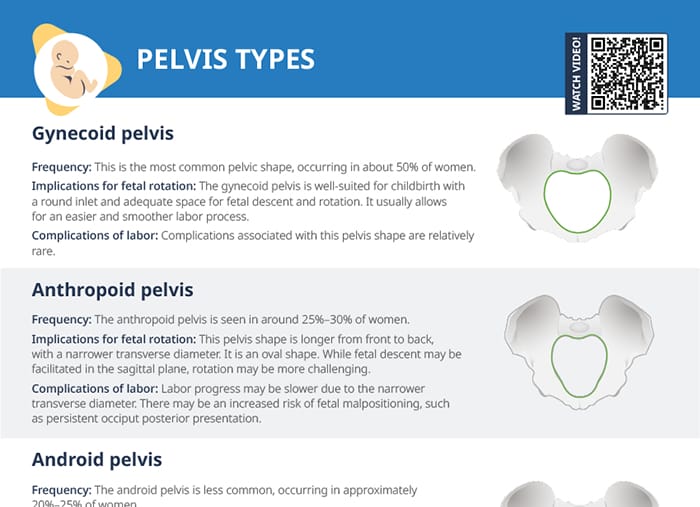Nursing Knowledge
“The 5 Ps of labor” is a mnemonic used to remember the key aspects of the labor process. Each of the Ps stands for an element of labor that contributes to the progress and will need to be assessed and monitored to make sure labor is progressing safely.
The first P, “Passenger,” refers to the position of the fetus.
Fetal attitude describes the relationship of the fetal parts to each other. The amount of flexion in the fetal body, specifically the head (how close the chin is to the chest).
The more flexed the fetal head, the smaller the diameter as it passes through the pelvis → the easier.
The fetal lie describes the relationship of the fetal spine to the maternal spine. It can be
Fetal presentation is the relationship of the presenting part of the fetus to the quadrants of the maternal pelvis.
Types:

Concise overview of fetal lie, attitude, and presentation (normal positions and malpositions)
The passageway includes the bony pelvis, the soft structures of the cervix, the vagina, and the introitus (vaginal opening).
The pelvic shapes are:
Gynecoid is the most common and most favorable for vaginal birth.

The different types of pelvis shapes and their implications for labor and delivery
This refers to the contraction of the uterus and the maternal effort that moves the fetus out of the uterus.
Ideally, contractions are close together and regular. Excessive contractions can lead to tachysystole, such as 5 contractions within 10 minutes.
Primary powers are the uterine contractions, which are responsible for cervical dilation, effacement, and descent.
Secondary powers refers to the maternal pushing efforts.
Position refers to the maternal position during labor and birth.
Tip: Help the client move. Maternal movement helps promote vaginal birth. Upright positions help internal fetal rotation.
Epidurals limit mobility but still allow for several labor positions, including lying on the back, side, on hands and knees, and being semi-seated. Even with an epidural, frequent position changes and movement as possible can help with labor progression.

Overview of the primary labor positions with a summary of their benefits and risks
This aspect refers to supporting the pregnant client’s psychological adaptation to labor.
Ways to support birthing clients with their frame of mind during labor include:
RELATED TOPIC:
Free Download
Master the topic with a unique study combination of a concise summary paired with video lectures.
USMLE™ is a joint program of the Federation of State Medical Boards (FSMB®) and National Board of Medical Examiners (NBME®). MCAT is a registered trademark of the Association of American Medical Colleges (AAMC). NCLEX®, NCLEX-RN®, and NCLEX-PN® are registered trademarks of the National Council of State Boards of Nursing, Inc (NCSBN®). None of the trademark holders are endorsed by nor affiliated with Lecturio.
Your free account gives you access to:
or